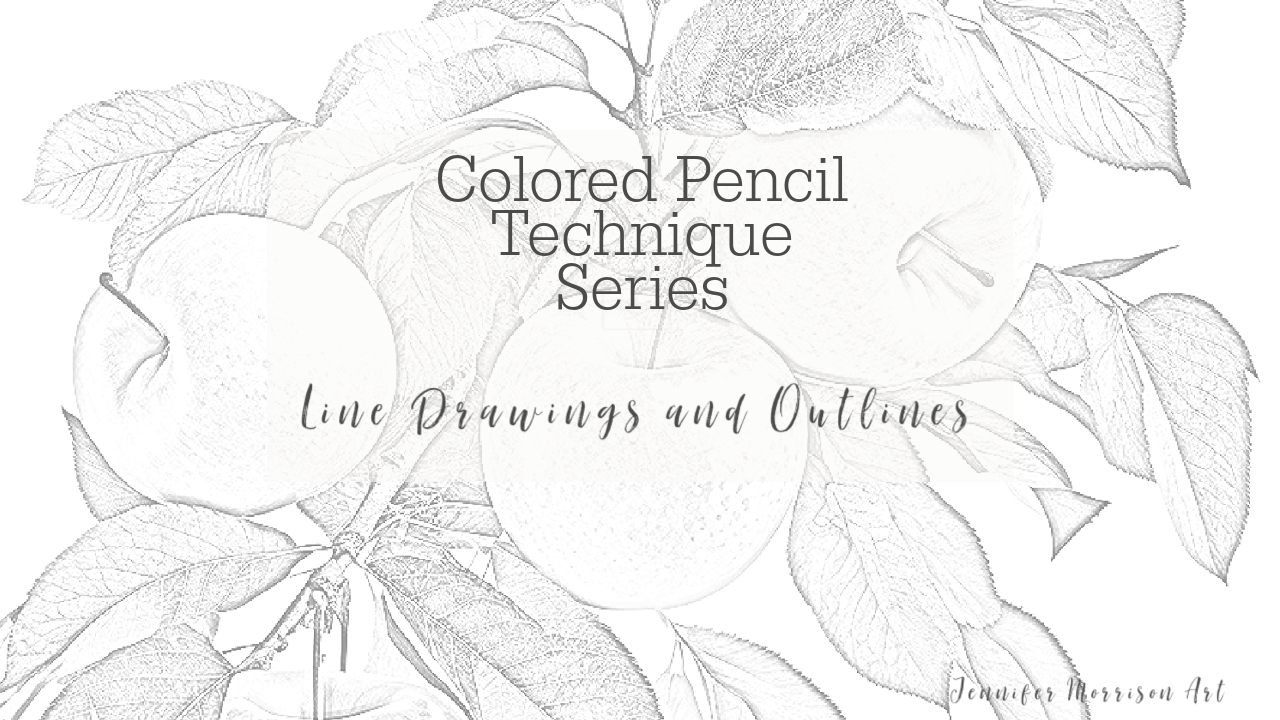Create a perfect line drawing for your Colored pencil drawing using Tracing tools
Are you looking for a fast, easy, fool-proof way to create an outline for your next drawing or painting?
The best way that I know of to create a perfect outline every time is to trace.
There are several tools available that can assist you with this process. Here are some of my favorites.
Tracing Tools
- Computer Monitor– Simply pull up your reference image on your computer, tape your drawing paper on top and trace. This is what I do 9 times out of 10.
- TV Screen- You can use the screen mirroring feature on your phone to project your image onto a TV Screen using a Smart TV, Apple TV, Roku, etc. Tape your drawing paper on top and trace.
- Bright Window– If you are looking for a low-tech way to trace your images, try using a bright window. Simply print out your reference, tape it to a very bright window, tape your drawing paper on top and trace.
- Tracing Paper/Transfer Paper– Occasionally, I might be using a type of paper that is difficult to see through using a monitor or window. Papers like Pastelmat, Sanded Paper, Toned Paper, or Black Paper are examples. In these cases, you can use graphite transfer paper or white transfer paper to trace the outline of the reference onto your paper.
- Light Box– This is just an under-lit box that helps you see your printed image more easily. Tracing using a light box would be very similar to using a TV screen or bright window.
- Projector– This is a tool that will project an image onto your paper that you can then trace. These are great if you want to draw on a large scale or for something like a mural. Of course, they would work for a small piece as well.


tips for tracing
- Use a really sharp pencil so that you get a nice thin line rather than a wide, soft line. I like to use a light grey Polychromos Pencil (Cool or Warm Grey I or II) because it holds a nice point creates a great outline.
- You can also use one of the main colors from the drawing you are going to be working on. For example, for a green leaf, outline in green. I like to use Yellow to outline if my drawing will be yellow because it is a more transparent color.
- Don’t push too hard with your pencil. You don’t want to indent the paper or create a resist that will show later.
- Use a low-tack artist tape if you are taping your paper to a Computer Monitor or TV Screen to avoid damaging the screen.
- Pay attention to what you are doing! Draw, don’t just mindlessly trace. Refer to a clear image of your reference for areas that are hard to see through the paper. Don’t draw a line unless you know what it ‘goes with’. Otherwise, you can end up with a jumble of lines that don’t make sense.
- Trace entire sections and then go back and add details. Don’t just go around the entire outer edge of the reference. Trace each leaf, petal, stem, fruit, etc. separately.
- Next, add details. You can add as many details as you want but I find too many details to be confusing. I prefer to draw in ‘reference points’. I like to trace in the main veins on leaves and a few directional veins on petals.
- Don’t forget to mark where your shadows and highlights stop and start. You might want to do this with an even lighter line than you use for the rest of the piece or even a dotted/broken line.
- Take your time while tracing. It will save you a lot of stress and struggle later and can make the final outcome of your drawing much better.

